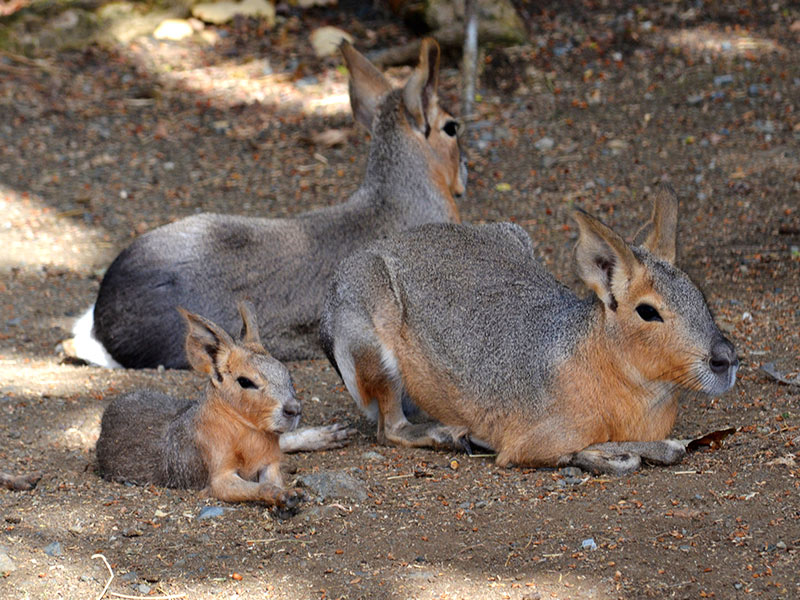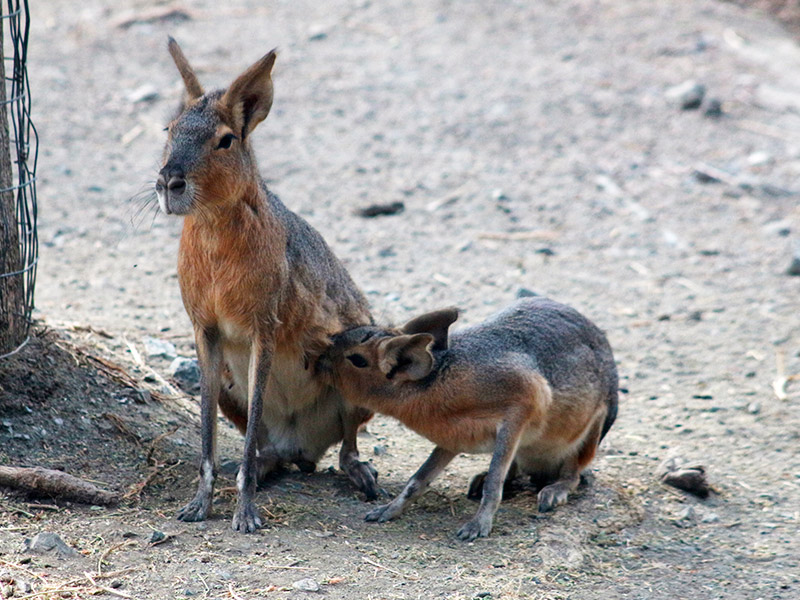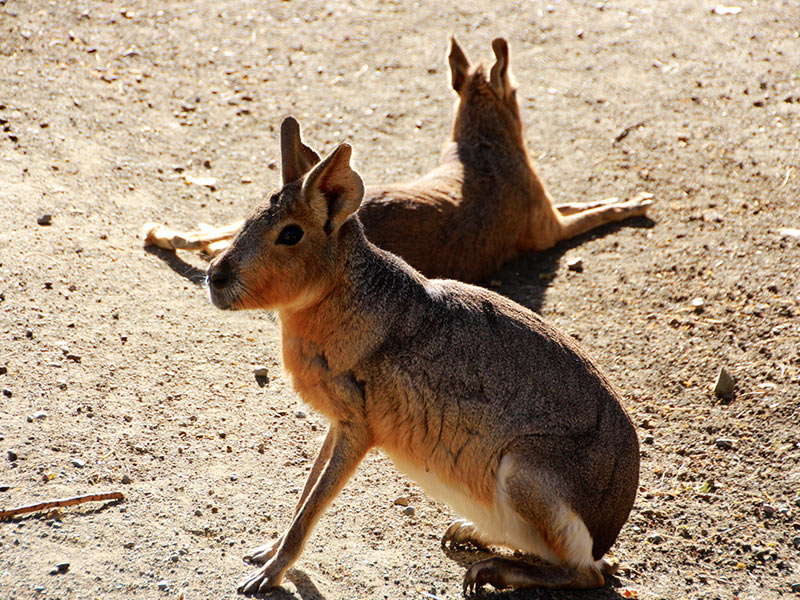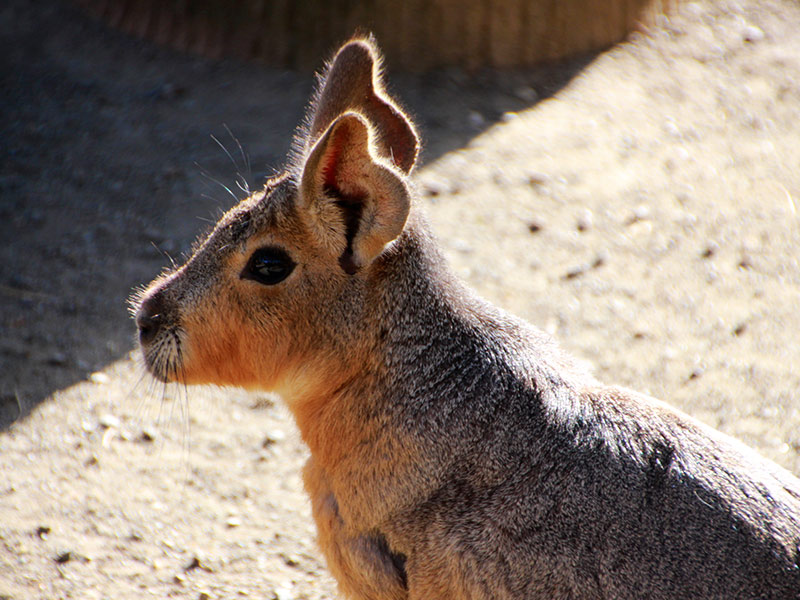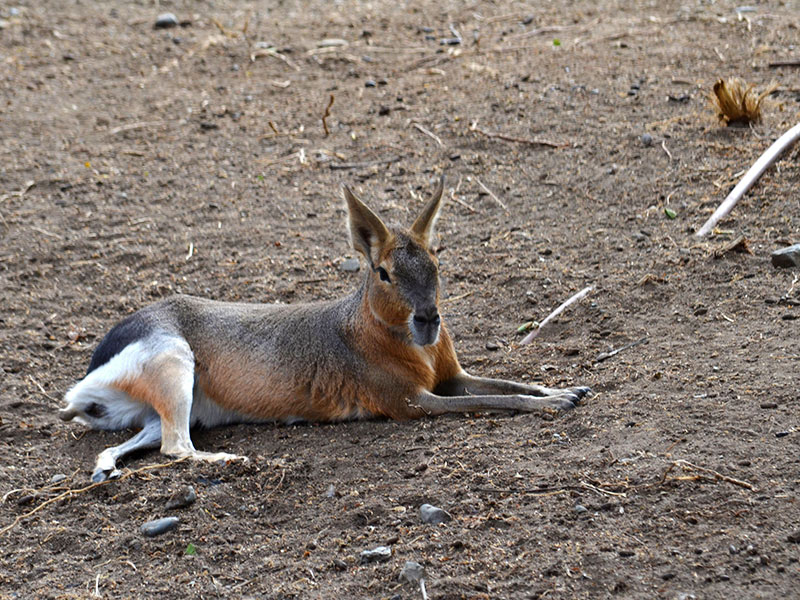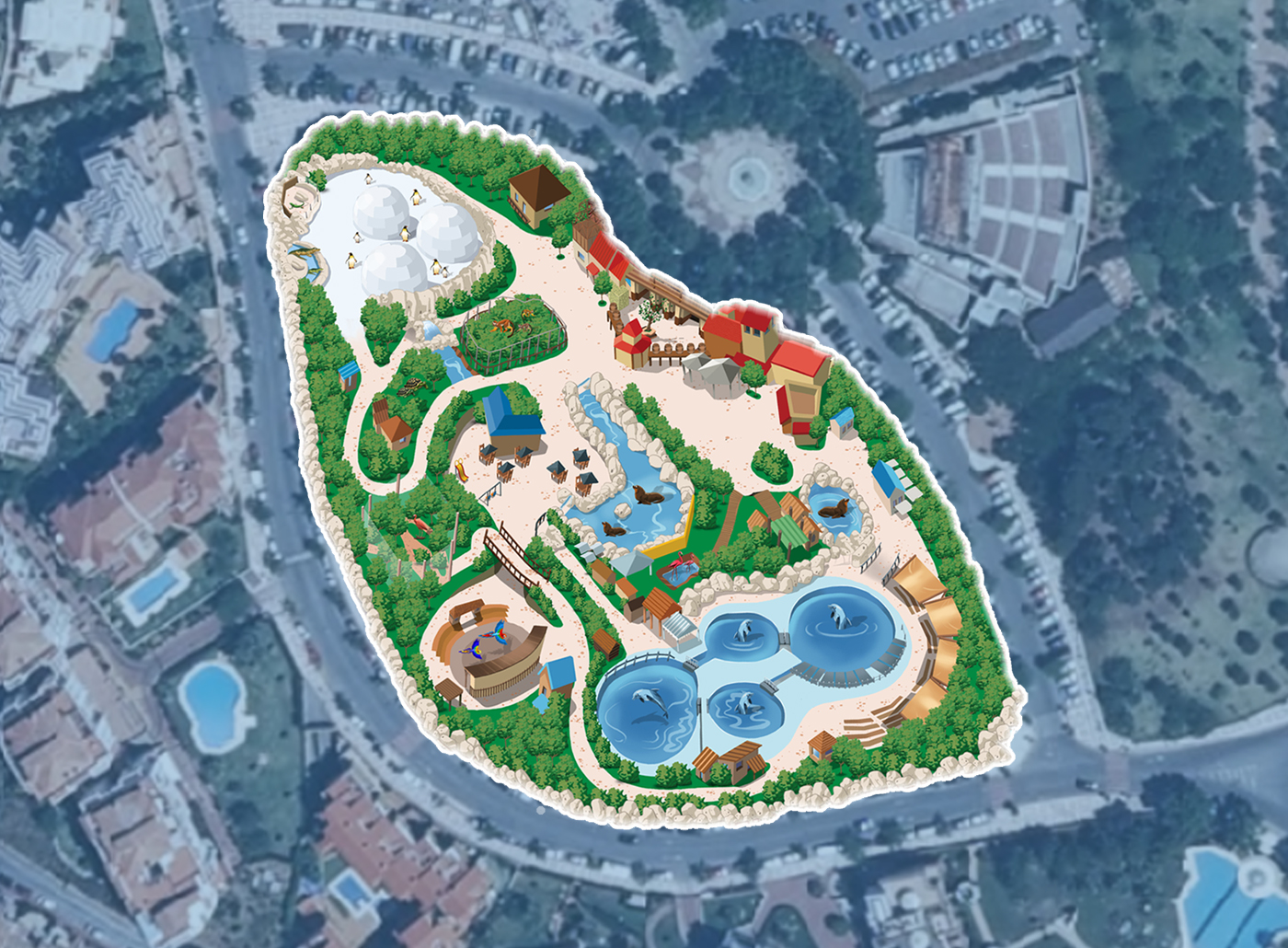The Patagonian Mara lives only in the arid regions of central and southern Argentina.
It is a monogamous species and male-female pairs usually mate for life. The bond is maintained by the efforts of the male, who follows and protects the female. Monogamy increases the male's reproductive success by reducing the death rate of his own offspring and increasing the longevity of his mate, allowing him more opportunities to reproduce. Another benefit of pair bonding is that females can invest more time and attention in caring for their young, relying on the male to watch out for predators. The female gives birth to 1 or 2 young after 100 days of gestation. Although members of this species spend most of the year in male-female pairs, when the young are born, they gather in large groups around large "settlements" of burrows and care for the young in communal nurseries.
The Mara's area of distribution is continually shifting in response to food resources. They only eat the tips of the grass blades, so resources are depleted very quickly and, once exhausted, it takes up to four months to fully renew.
Humans now represent the main threat to this species, both through habitat conversion and poaching.
